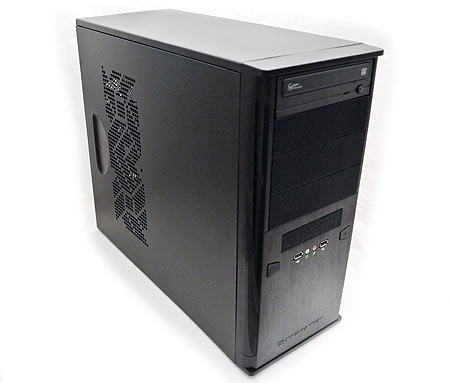System Builder Marathon, Q1 2013: $800 Enthusiast PC
System Assembly And Overclocking
We were pleasantly surprised with Xigmatek's Asgard II case. The tool-less drive mounts work well, and the spacious interior provides ample room for a clean installation. For a budget-oriented chassis, it actually feels well-built, too. Our biggest complaint about this enclosure is that it appears to have been dropped during shipping, requiring us to push out a few creases.
With that said, Paul has used this case several times in the System Builder Marathon, and was happy with it in the past. It's good enough for me and my less-full wallet today.
The good news is that we didn't have any issues with the case, unlike Paul's experience yesterday. The orange-on-black color scheme inside is attractive enough, and we almost wish we had picked the orange-trimmed version to match.
Overclocking
Overclocking the Core i5-3550K is straightforward enough, and ASRock's Z77 Pro3 gives us all of the settings we need to do it properly. We did give the BIOS' auto-overclocking feature a try, but it failed to boot at 4.6 GHz. And while the automatically-configured 4.4 GHz setting did load up into Windows, one thread failed during a Prime95 stress test.
This forced us to tackle the overclock manually. Even with incremental voltage increases, the system wouldn't boot at 4.6 GHz. A 0.1 V bump to the processor yielded a stable 4.5 GHz. However, certain benchmarks returned lower performance than what I was getting at stock frequencies. So, I dropped the overclock to 4.4 GHz with a +0.085 V offset and got the speed-up I was expecting.
As for the memory overclock, I simply triggered the memory kit's XMP profile, which increased the frequency to DDR3-1600 with 8-8-8-24 timings.
Get Tom's Hardware's best news and in-depth reviews, straight to your inbox.
I then swapped over to my graphics card. Not sure what to expect from AMD's Tahiti LE GPU, I was surprised to see the chip take 1,275 MHz and a memory frequency of 1,650 MHz. Unfortunately, those settings triggered some throttling during our benchmarks, requiring that I step back to a 1,150 MHz core clock and 1,575 MHz memory. Still, when you consider PowerColor's card ships at 975 MHz, our GPU overclock is respectable.
Current page: System Assembly And Overclocking
Prev Page Memory, Hard Drives, And Optical Drive Next Page Test System And BenchmarksDon Woligroski was a former senior hardware editor for Tom's Hardware. He has covered a wide range of PC hardware topics, including CPUs, GPUs, system building, and emerging technologies.
-
DragonClaw The table outlining the components of the build. It should read 800$ and not 1000$, I think?Reply -
abbadon_34 guessed they reused the previous template, sure it'll be fixed soon and people will wonder what we're talking aboutReply -
mayankleoboy1 ReplyAlthough we're going to miss the snappy boot-up times and almost-instant application launches the solid-state drive enabled, we probably won't be penalized too much in the benchmark results.
And therein lies the problem with benchmarks.
An enthusiast PC, without a SSD boot drive? -
manitoublack That's a great value PC there. Would be hard pressed to think of a more compelling combination for the money. Well done.Reply
-
qTrueno The heat sink breaks easily but it is a good cheap solution, as long it doesn't break.Reply -
ipwn3r456 If this machine were at $1000 budget, might as well add a 128GB SSD, and replace the HD 7870 to a HD 7950.Reply -
dudewitbow ipwn3r456If this machine were at $1000 budget, might as well add a 128GB SSD, and replace the HD 7870 to a HD 7950.Reply
there would be marginal performance boost from switching from a 7870 LE(nerfed 7950, heck can call it a 7930 and it would be partially correct in a way) to an actual 7950. Though its likely the outcome for the 1k budget coming up next. -
abhijitkalyane I really wasn't expecting the AMD chip to be so close to the i5. I'm a bit surprised. The power consumption figures look bad for the FX though.Reply




